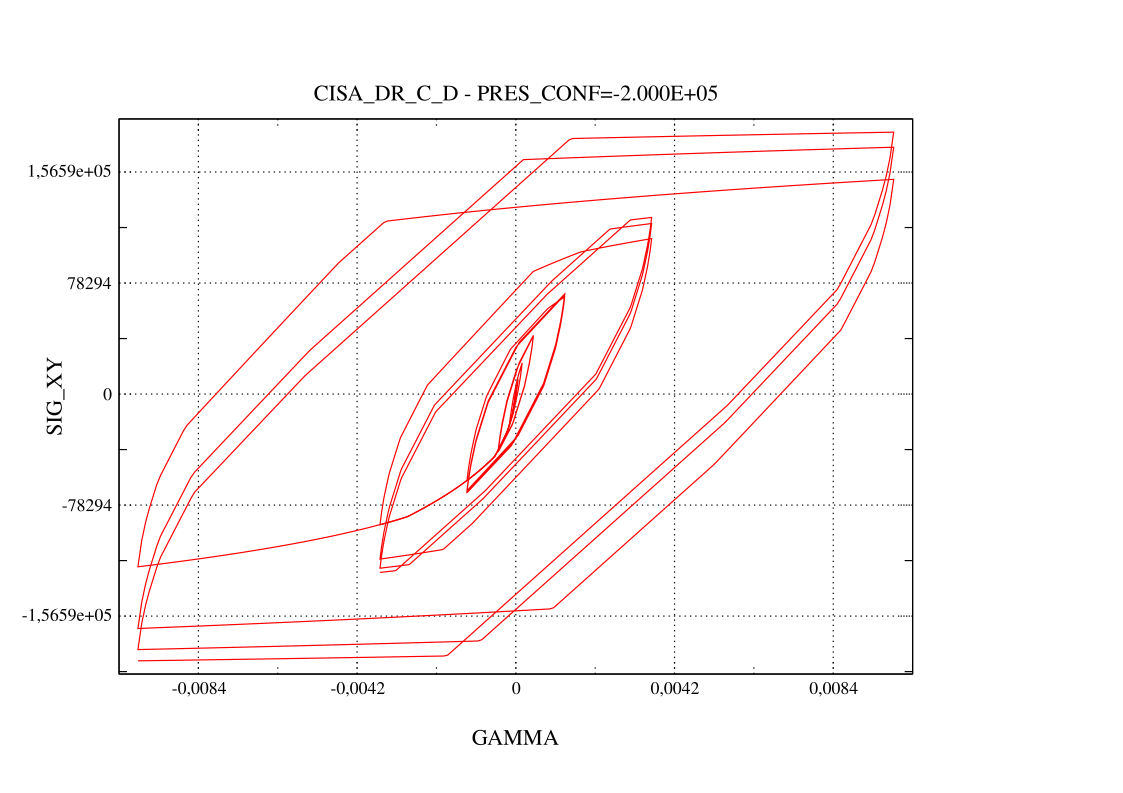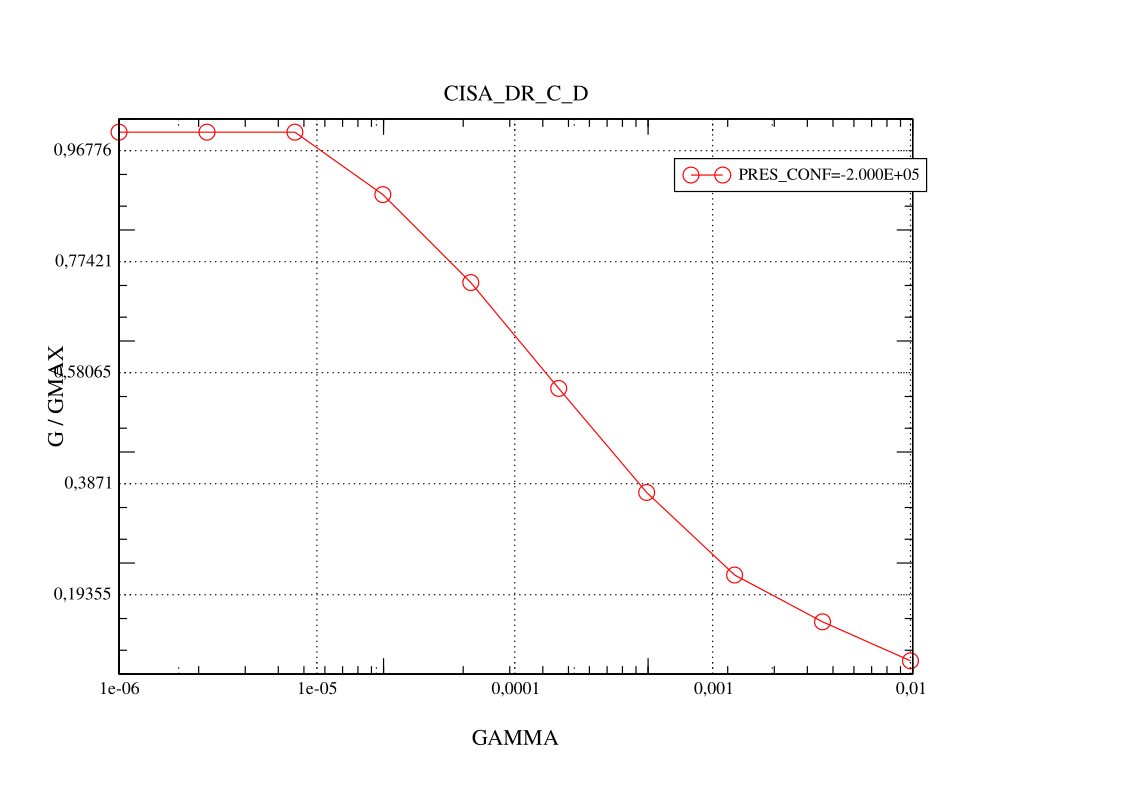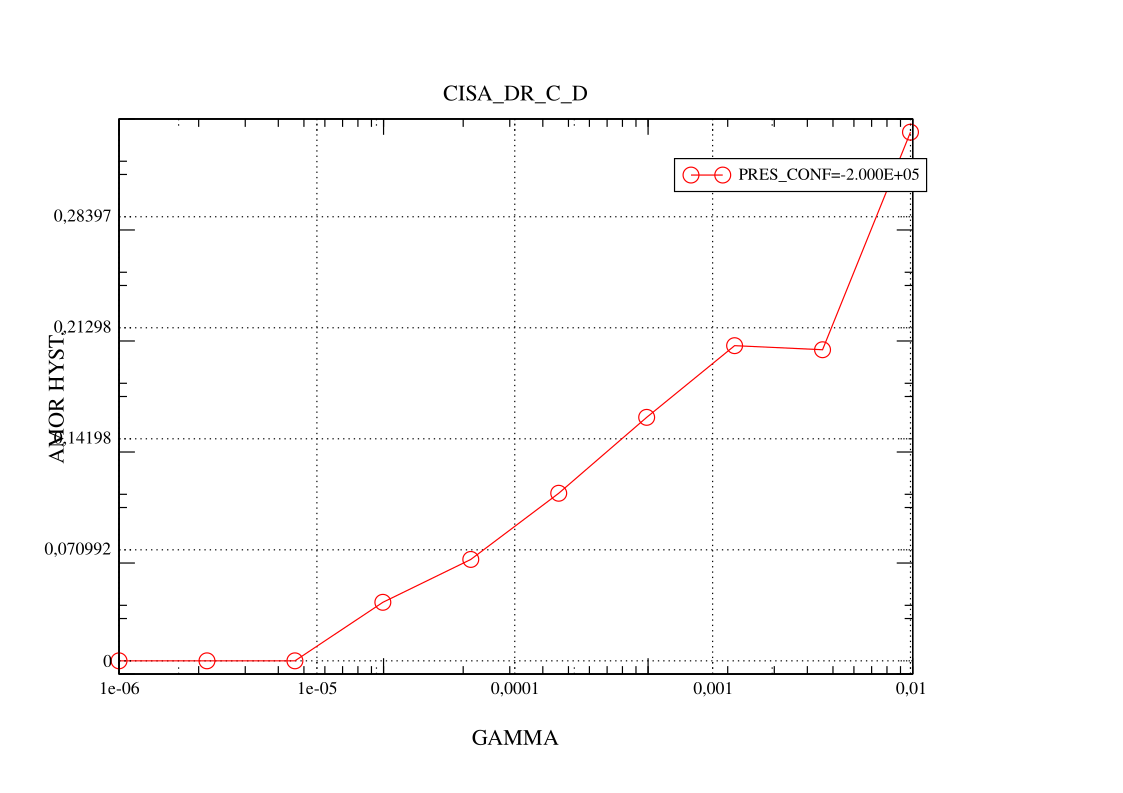14. Modeling I#
14.1. Characteristics of modeling#
Simulation at the hardware point. The objective is to validate the compatibility of CALC_ESSAI_GEOMECA with the CSSM behavior model. To do this, several drained cyclic shear tests with imposed displacement ESSAI_CISA_DR_C_D are carried out. The number of cycles applied for ten distortion amplitudes \(\gamma=2\varepsilon_{xy}\in [10^{-6};10^{-2}]\) is three; the confinement pressure is equal to \(200\) kPa; The convergence criterion is \(10^{-10}\).
The parameters for model CSSM are given in v6.07.112-table_parametres_CSSM.
Note
With the parameters of
v6.07.112-table_parametres_CSSM, the initial elastic limit in isotropic compression is \(2p_{c0}(1-\eta)=200\) kPa (see [r7.01.44]). Thus, the state of the stresses, before applying shear, is located at the limit of the initial elasticity domain. of the model.
14.2. Tested sizes and results#
Two non-regression tests are carried out on component SIXY at distortion amplitudes \(\gamma\) equal to \(10^{-6}\) and \(10^{-2}\) after having imposed the three loading cycles.
Fig. 14.1 shows hysteresis cycles. Positive work hardening is observed, which stabilizes during the three cycles imposed at the same level of distortion. The Fig. 14.2 and Fig. 14.3 trace the changes in the standardized secant shear modulus and hysteretic damping (reduced damping). These are comparable to the predictions of the Hujeux and Iwan models.

Fig. 14.1 Shear stress responses (Pa).#

Fig. 14.2 Evolution of the normalized secant shear modulus.#

Fig. 14.3 Evolution of hysteretic damping.#